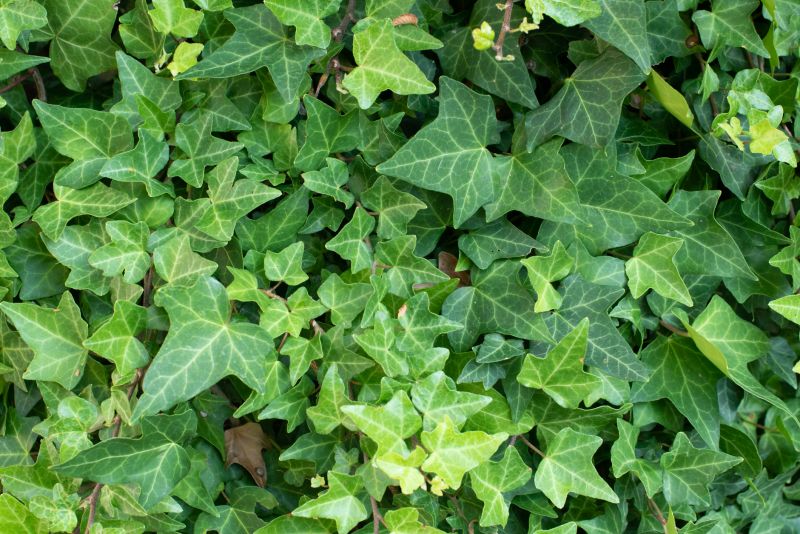Expert Picks For Simplifying English Ivy Removal Tasks
Find the most effective tools and products recommended by professionals to tackle stubborn English Ivy with ease.
 English ivy can add aesthetic appeal to many outdoor spaces, but managing its growth often requires effective removal products. When tackling English ivy, selecting the right tools and solutions is essential for safety and efficiency. Various products are designed to target invasive vine growth, helping homeowners and landscapers maintain healthy, desired plantings. Proper removal not only improves the appearance of a property but also prevents potential damage to structures and other plants.
English ivy can add aesthetic appeal to many outdoor spaces, but managing its growth often requires effective removal products. When tackling English ivy, selecting the right tools and solutions is essential for safety and efficiency. Various products are designed to target invasive vine growth, helping homeowners and landscapers maintain healthy, desired plantings. Proper removal not only improves the appearance of a property but also prevents potential damage to structures and other plants.
Top Overall Option
Multi-Purpose Garden Pruning Shears
A versatile set of pruning shears designed for precise cuts on thick vines and branches, suitable for removing English ivy from various surfaces. These shears offer ergonomic handles and sharp blades that facilitate effective trimming while minimizing hand fatigue. Pairing with appropriate chemical treatments can enhance overall removal efforts.
Types of Products For English Ivy Removals
Manual Pruning Shears
Ideal for light to moderate ivy trimming and precise cuts on small vines.
Lopping Shears
Designed for cutting thicker vines and branches at higher or hard-to-reach spots.
Pruning Saws
Suitable for removing large, woody sections of ivy with controlled precision.
Herbicide Sprays
Chemical solutions formulated to target and kill ivy roots, preventing regrowth.
Vine Removal Tools
Specialized tools designed to grip and pull out stubborn vine roots.
Root Rakes
Tools for digging out and removing root systems to prevent regrowth.
Heavy-Duty Weed Killers
Concentrated formulations for controlling invasive vine growth on large areas.
Extendable Pole Pruners
Tools with long handles for reaching high or difficult areas safely.
Chemical Brush Killers
Powerful herbicides designed for brush and vine eradication.
Vine Cutting Tools with Safety Guards
Tools featuring safety mechanisms to prevent accidental injury during removal.
Spray Bottles for Herbicides
Application tools for precise and controlled herbicide distribution.
Manual Pulling Tools
Hand tools designed to grip and pull out ivy roots and vines.
Popular Choices
Battery-powered tools that make trimming thick vines easier and faster.
Robust scissors for tackling dense vine growth with ease.
Complete sets including tools and herbicides for comprehensive ivy control.
Targeted herbicide formulations for spot treatment of stubborn roots.
Long-handled tools to access high or difficult areas comfortably.
Devices specifically designed to grip and extract vine roots with minimal effort.
Powerful herbicides with precision applicators for targeted removal.
Shovels and hand tools for removing extensive root systems.
Foam-based herbicides that stick to vines for effective treatment.
Tools designed to reduce risk during heavy pruning tasks.
Electric or gas-powered equipment for large-scale removal projects.
Compact tools for pulling out vine roots manually.
Effective removal of English ivy typically involves a combination of mechanical tools and chemical solutions. Mechanical options include pruning shears, loppers, and pruning saws that help cut back thick vines, especially in hard-to-reach areas. Chemical herbicides formulated for vine control can assist in killing persistent roots and preventing regrowth, but they should be used with care to avoid damaging surrounding plants. Combining physical removal with targeted chemical application often yields the best results.
Safety considerations are paramount when selecting products for ivy removal. Protective gear such as gloves, eye protection, and long sleeves is recommended to prevent skin irritation or injury from sharp tools or chemical agents. Additionally, understanding the growth pattern of English ivy can guide effective removal strategies, whether focusing on surface vines or deep-rooted sections. Regular maintenance and monitoring can help ensure that the ivy does not re-establish after removal efforts.
Choosing the right products depends on the extent of growth and the specific environment. For large-scale infestations, more robust tools and concentrated herbicides may be necessary, while smaller or delicate areas might benefit from gentle pruning tools and milder solutions. Proper application techniques and adherence to safety instructions are critical for achieving desirable results without unintended damage.
Key Buying Considerations
- Extent of ivy growth and whether removal is ongoing or one-time.
- Type of surface the ivy is growing on, such as wood, brick, or soil.
- Size and thickness of vines to determine appropriate cutting tools.
- Safety features incorporated into tools to prevent injury during use.
- Compatibility of chemical herbicides with local plant life and surroundings.
- Ease of use and ergonomic design for prolonged or frequent tasks.
- Durability and material quality of pruning tools and equipment.
- Application precision for chemical solutions to avoid unintended damage.
- Environmental conditions, such as weather and accessibility of the area.
- Regrowth prevention strategies, including root removal or chemical treatments.
- Budget constraints and cost-effectiveness of combined removal methods.
- Availability of replacement parts or maintenance for tools.
- User reviews and recommendations for effectiveness and safety.
- Storage and portability of tools for easy access and transport.
- Compatibility of products with existing gardening or landscaping equipment.
